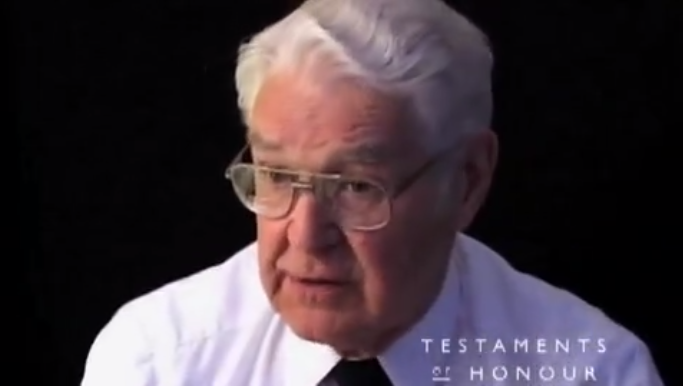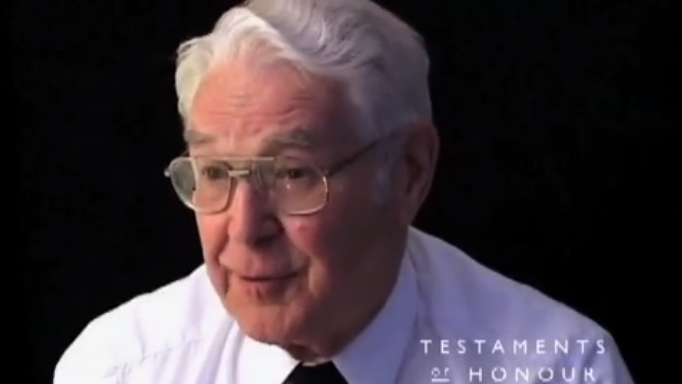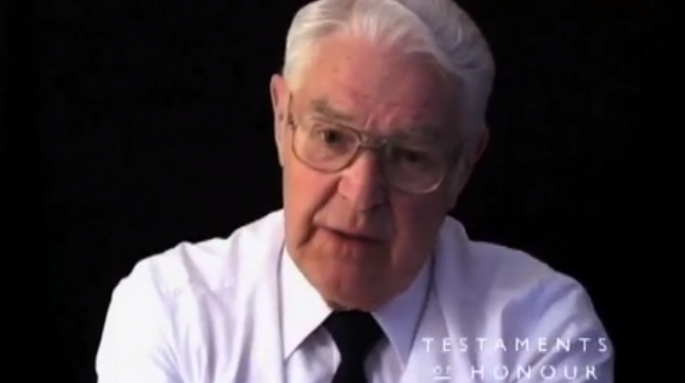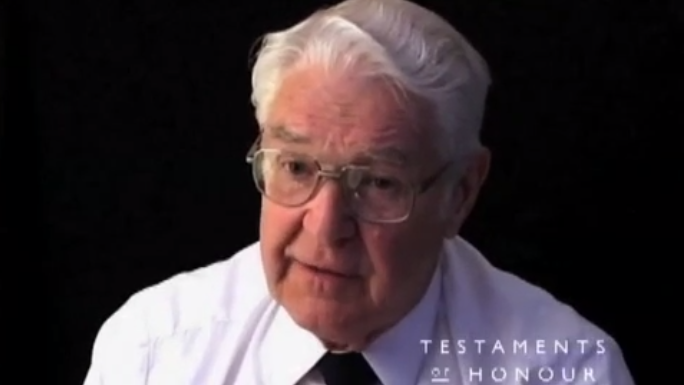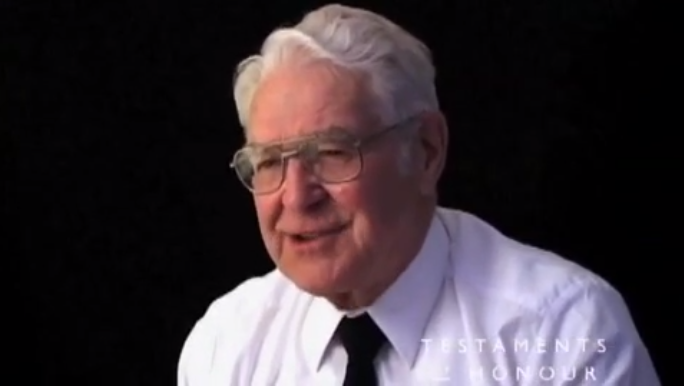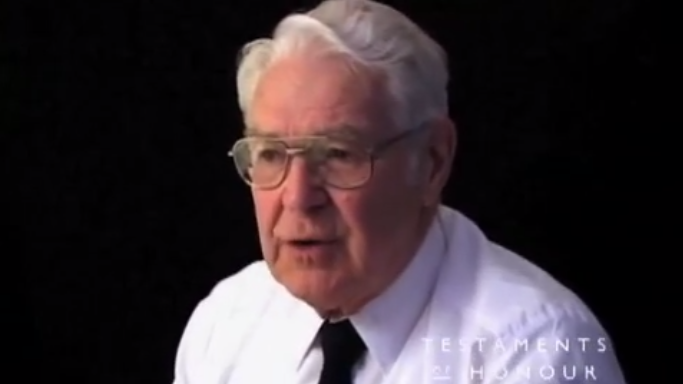The Athabascan (Part 2 of 5)
Heroes Remember
The Athabascan (Part 2 of 5)
Transcript
Description
Mr. Hannam talks about the Athabascan, and his experience with it (part 2 of 5). He talks about helping rescue the survivors from the Athabascan, and how he ended up adrift searching for survivors, in a boat (from the Haida) with an engine that wouldn't work.
Jack Hannam
Mr. Hannam was born in Vancouver, BC on June 19, 1924. At the age of five, shortly after his father's death, he moved to Victoria. His father survived the sinking of the HMCS Charlottetown in the St. Lawrence River but was tragically run down by a drunk driver. He started with the Merchant Marine at the age of 15 and then went on to the navy when he was 17. He joined the reserves Sept. 9, 1941. He served first on the HMCS Camrose and later on the HMCS Haida in both the North Atlantic and off North Africa.
Meta Data
- Medium:
- Video
- Owner:
- Veterans Affairs Canada
- Duration:
- 02:30
- Person Interviewed:
- Jack Hannam
- War, Conflict or Mission:
- Second World War
- Location/Theatre:
- Atlantic Ocean
- Branch:
- Navy
- Units/Ship:
- HMCS Haida
- Rank:
- Leading Seaman
- Occupation:
- Seaman
Related Videos
- Date modified:



